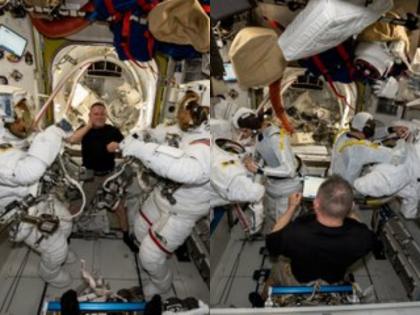Watch: NASA Astronaut Sunita Williams Performs Spacewalk Amid Extended Stay on ISS
By Lokmat English Desk | Updated: January 16, 2025 20:58 IST2025-01-16T20:58:12+5:302025-01-16T20:58:46+5:30
NASA Astronaut Sunita Williams and Butch Wilmore have been stranded in international space Station over 7 months now. NASA is ...

Watch: NASA Astronaut Sunita Williams Performs Spacewalk Amid Extended Stay on ISS
NASA Astronaut Sunita Williams and Butch Wilmore have been stranded in international space Station over 7 months now. NASA is trying all their level best to bring back the astronauts on earth but as per the reports it is postponed to March 2025. Amid this Sunita and Nick Hague Stepped out of the space station for the 6.5 hours spacewalk to tackle some overdue outdoor repair work.
This is Sunita Williams' eighth spacewalk and Nick Hague's fourth. The mission is called US Spacewalk 91. The main goal is to fix important equipment and repair the NICER X-ray telescope. The NICER telescope has been having problems since May 2023 because sunlight is getting through damaged shields, making it hard to study neutron stars. During the spacewalk, Williams and Hague will install special patches to stop the light from getting through and fix the telescope.
LIVE: Two @NASA_Astronauts, Nick Hague and Suni Williams, step outside of the @Space_Station to support station upgrades, including repairs to our NICER (Neutron star Interior Composition Explorer) X-ray telescope. https://t.co/0VP296OmRY
— NASA (@NASA) January 16, 2025
Along with repairing NICER, they will do other tasks, like removing old radio equipment and collecting microbial samples from the outside of the International Space Station (ISS). These tasks help with research on fire safety in space and how weightlessness affects human health.
Williams, who last did a spacewalk 12 years ago, is excited to be back outside in space. This spacewalk is also historic because it’s the first-time astronauts have fixed an X-ray telescope in space. Williams and Hague will do another spacewalk on January 23, 2025, to continue upgrading the ISS. Their work is important for advancing science and ensuring the ISS works for future missions.
Open in app